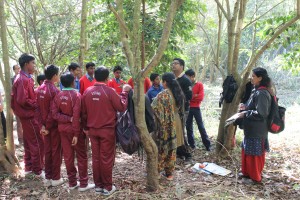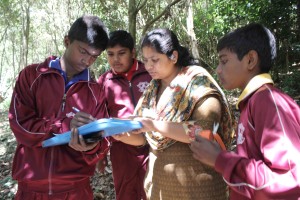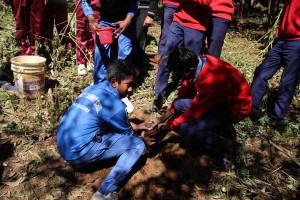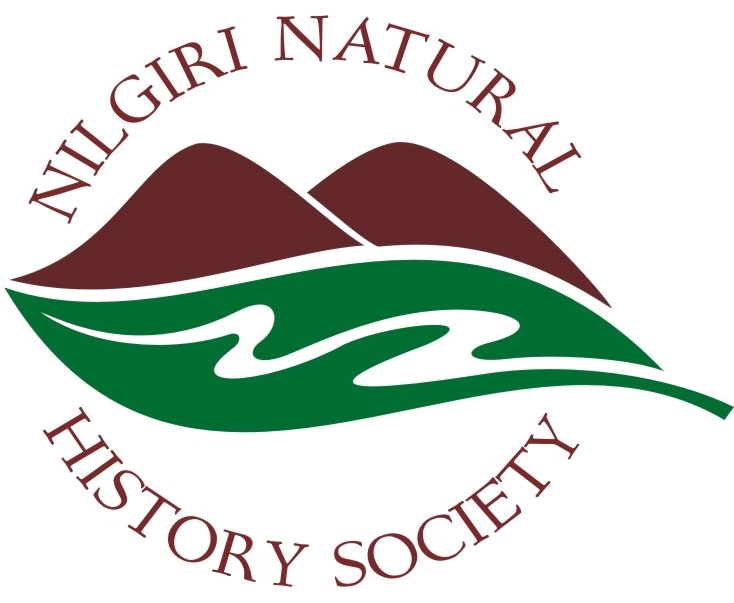 On Saturday, 15 students of VSVMS, Vishwashanti, and CSI schools of Kotagiri met up with Shiny Rahel at Happy Valley, the site of a habitat restoration project in Kotagiri town that Keystone has been working on since 2006. The activity was organized by the Nilgiri Natural History Society and consisted of an interactive session discussing the importance of forests as it relates to basic needs of water and food.
On Saturday, 15 students of VSVMS, Vishwashanti, and CSI schools of Kotagiri met up with Shiny Rahel at Happy Valley, the site of a habitat restoration project in Kotagiri town that Keystone has been working on since 2006. The activity was organized by the Nilgiri Natural History Society and consisted of an interactive session discussing the importance of forests as it relates to basic needs of water and food.
The children then divided themselves into groups and planted 5 saplings of Bikki (Elaeocarpus variabilis), Koli (Ligustrum perrottetii), Dhupa (Canarium strictum), Kulamavu (Persea macrantha), and Naaval (Syzygium cumini). Shiny explained to them the specialty of each species that was being planted, for eg, the resin from the Dhupa tree is used to make incense and the Naaval tree fruit is much sought after by birds, animals and humans.
 The children were then taught to identify and tag different species of trees. A friendly game of “We-found-it-first” was soon underway with teams taking the species identification clues from Shiny and then searching far and wide to locate the tree. In the space of two hours the children had tagged 30 trees of 13 species.
The children were then taught to identify and tag different species of trees. A friendly game of “We-found-it-first” was soon underway with teams taking the species identification clues from Shiny and then searching far and wide to locate the tree. In the space of two hours the children had tagged 30 trees of 13 species.
As the activity drew to a close, the children sat down to lunch below the trees and we could see the change in their eyes as they looked about them. They now knew the names of the trees and a friendship does begin with an exchange of names. The children were keen to come back the following weekend as volunteers and resume tagging ‘their’ trees in Happy Valley.
Happy Valley is crucial to Kotagiri town as it is the source of potable water for the population. In 2006, the habitat of approximately 1 acre had degenerated into a scrubland with invasive species like Cestrum aurantiacum, Solanum xanthocarpum, Solanum verbascifolium, and Lantana camara dominating the view.
 With the support of the Town Panchayat and local residents, Keystone began by clearing patches of invasives and recreating the native shola forest by planting about 400 saplings of 26 species. 10 years later, the site shows a healthy forest with plenty of birdlife. A survey conducted in 2015 to generate a 10-year status report had local residents remarking that water level in the wells have remained constant even during the dry months of summer where earlier there had been severe shortage of water. In the long run, we hope to see the Happy Valley restoration site be recognized as a tree park where people can have an opportunity to understand and appreciate the crucial role of forests in their lives.
With the support of the Town Panchayat and local residents, Keystone began by clearing patches of invasives and recreating the native shola forest by planting about 400 saplings of 26 species. 10 years later, the site shows a healthy forest with plenty of birdlife. A survey conducted in 2015 to generate a 10-year status report had local residents remarking that water level in the wells have remained constant even during the dry months of summer where earlier there had been severe shortage of water. In the long run, we hope to see the Happy Valley restoration site be recognized as a tree park where people can have an opportunity to understand and appreciate the crucial role of forests in their lives.

